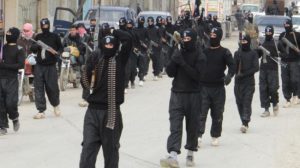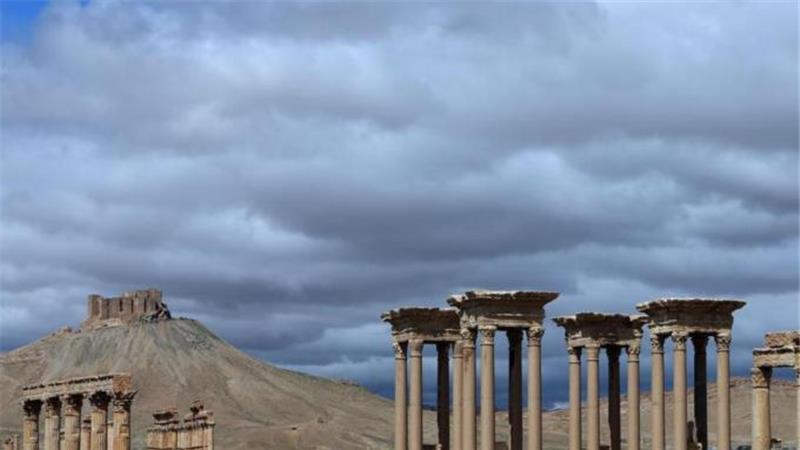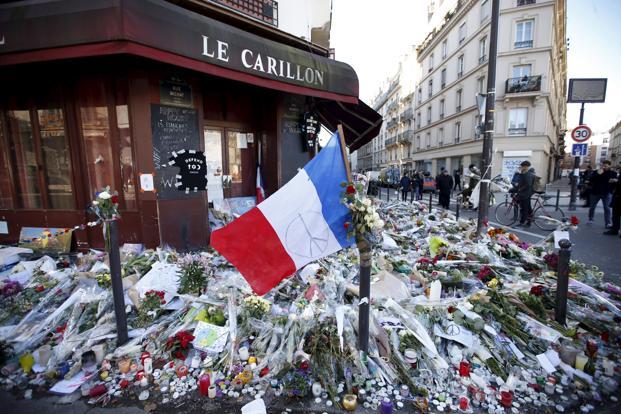ISIL,the Islamic State of Iraq and the Levant, has shifted from attacking humans to attacking humanity in a broader sense, and while the distinction may seem small, the implications are terrifyingly large. The world is used to terrorist organizations driven by hatred for the West and carrying out attacks accordingly, but ISIL is motivated by a different goal. It desires to create a trans-Arab state and rebuild an Islamic caliphate—starting with the destruction of the cultural heritage of its own region.
On March 18, two men dressed as soldiers opened fire in the National Bardo Museum in Tunisia’s capital, killing 21 people. The targets, however, were not the individual people, 18 of whom were tourists from Spain, Italy, Poland, and Germany. Rather, the target was what was around the people, what the people represented: art and culture.
Hours before the attack, a pro-ISIL Twitter account posted an ominous warning: “Coming good news to Tunisia’s Muslims, a shock to the disbelievers and the hypocrites, especially those who claim to be cultured.” ISIL also released an official audio statement, claiming credit for the massacre and warning of more violence. “We tell the apostates who sit on the chest of Muslim Tunisia: Wait for the glad tidings of what will harm you, impure ones, for what you have seen today is the first drop of the rain, God willing,” the statement said. “You will not enjoy security, nor be pleased with peace, while the Islamic State has men like these.”
This attack is reminiscent of the Luxor Massacre in Egypt in 1997 by the Islamic Group, but the goal is very different in this case, further highlighting the unique brand of terrorism ISIL is employing. In the 1997 attack, militants opened fire on tourists—killing 70—with the goal of destroying the Egyptian economy by targeting tourism. While tourists were also the victims of ISIL last week, they were collateral damage of the intended victim: Iraqi culture.
This is the latest in a string of ISIL attacks targeting culture. Since capturing the Iraqi city of Mosul in July 2014, ISIL has destroyed at least 28 historical religious buildings across that city, including the Tomb of Jonah holy to both Christians and Muslims, along with dozens of others across Iraq and Syria. At the end of February, ISIL released a video showing militants using sledgehammers and drills to destroy statues and other relics from the Assyrian Empire, some of which were nearly 3000 years old. In early March, the Iraqi Ministry of Tourism and Antiquities announced that ISIL had “bulldozed” Nimrud, the second capital of the Assyrian Empire, founded during the 13th century B.C. Even more recently, ISIL militants destroyed the 2,000-year-old city of Hatra.
Through these attacks, ISIL is employing a method of warfare and terrorism previously used almost exclusively by government regimes engaged in genocide. ISIL targets and destroys anything and anyone that does not conform to its interpretation of Islam—massacring minority groups and destroying priceless historical artifacts and sites.

This is not just the speculation of academics and government officials; ISIL promoted this goal in the video it released showing its destruction of Mosul. “These antiquities and idols behind me were from people in past centuries and were worshipped instead of God,” an unidentified man explains. “When God Almighty orders us to destroy these statues, idols, and antiquities, we must do it, even if they’re worth billions of dollars.”
Iraq’s Deputy Tourism and Antiquities Minister Oais Hussein Rashid described ISIL’s goal as “trying to erase the history of Iraq,” and added that “it is part of their plan to erase civilization and humanity in general.”
The United Nations has strongly denounced these cultural attacks as war crimes. “I condemn in the strongest possible manner the destruction of the archaeological site of the Nimrud site in Iraq. This is yet another attack against the Iraq people, reminding us that nothing is safe from the cultural cleansing underway in the country. It targets human lives, minorities, and is marked by the systematic destruction of humanity’s ancient heritage,” said Irina Bokova, Director the United Nations Educational, Scientific, and Cultural Organization. “We cannot remain silent. The deliberate destruction of cultural heritage constitutes a war crime. I call on all political and religious leaders in the region to stand up and remind everyone that there is absolutely no political or religious justification for the destruction of humanity’s cultural heritage.”
Cultural warfare was used in the Holocaust and in the Armenian, Cambodian, and Bosnian genocides. While cultural warfare by terrorist groups is a bit more rare, the goal is the same: true domination of a culture stemming from the control and destruction of every aspect of a population. In order to achieve its goal of establishing an Islamic caliphate, it must fundamentally dismantle the cultures it strives to replace. Eliminating groups of people is not enough, because the remaining enclaves of the civilization can live on elsewhere as refugees, but the cultural sites and artifacts being destroyed are unrecoverable and irreplaceable.
The loss of human life in each of these attacks is a tragedy not to be forgotten or ignored, but the destruction of the physical sites and artifacts is cause for alarm for reasons that extend far beyond their heavy price tags. It is difficult to understand from a Western perspective—from a side of the world that attaches identity to national and political institutions—but these cultural elements hold indescribable cultural value. They have symbolic and religious weight and are associated with ancestry, lineage, and the very foundations of society. These objects and sites provide a sense of identity to millions in that region, and their loss risks shattering that identity. International relations scholars Helmut Anheier and Mark Juergensmeyer note, “Culture is more than the sum of its material manifestations. Destroying cultural objects also destroys the possibility for cultural traditions, knowledge, and know-how to be transmitted across generations.”

ISIL’s brand of terrorism is so extreme that even al-Qaeda’s leader Ayman al-Zawahiri disavowed the group. The specific tactic of cultural terrorism and destruction is not new or unique: the first Christians in Egypt destroyed pharonic monuments; proponents of the Protestant Reformation destroyed idolatrous religious imagery; and more recently, the Taliban destroyed the Buddhas of Bamiyan in 2001. Part of what is unique in the case of ISIL is that the cultural targets are thousands of years old and no longer worshipped—as if the group is attempting to attack the identity of the region at a deeper and more fundamental level.
While the individual methods being employed by ISIL may not be anything revolutionary, the combination of its terroristic strategies, unique goals, and complex funding structure is unlike anything the world has ever seen from a single group. Traditional counterterrorism techniques will not work in destroying ISIL, but in figuring out what will, we must first truly understand its goals. And in short, the outcome is simple: destroying and dismantling the world as we know it.
– By Shaun Kleber/Photo Credit: Al Jazeera


